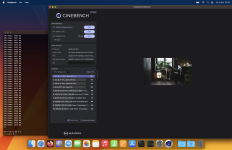Hey @theorist9 you know that chips and cheese article you posted on the old Apple GPU, about how it had low L1 cache relative to Nvidia/AMD? I'm going out on a limb here and say the cache structure has probably changed this generation!View attachment 27209
video confirms @leman 's test and of course the patent he dug up. Very cool, very, very cool.
EDIT: OHHHHHH ... that's how they did it and why the patent kept mentioning cache and DRAM and barely mentioned registers and why they call it Dynamic caching. I admit I only skimmed the patent, but they are now treating a cores registers as another cache. Huh ... that's ... wow ... that's a huge change.
View attachment 27214
Whoa .. continuing on ... they've turned them all into cache! How the hell do they keep the register performance so good treating it as a cache?! What the hell. Man I hope someone deep dives into this GPU.
FWIW, Chips and Cheese just posted this analysis of the M2 GPU:

A Brief Look at Apple’s M2 Pro iGPU
Integrated GPUs are often low-end affairs. Even when graphics performance matters, a combination of cost, die space, memory bandwidth, and power constraints prevent iGPUs’ performance from re…chipsandcheese.com
Thanks! He had said he was confused (as we all were with the exception of maybe @leman ) by the Dynamic Cache announcement. This clears up so much. And yet poses a whole set of new questions …Done! I didn’t suggest he do a write up as that might be a little pushy, but just said he might be interested in it.
Last edited:



